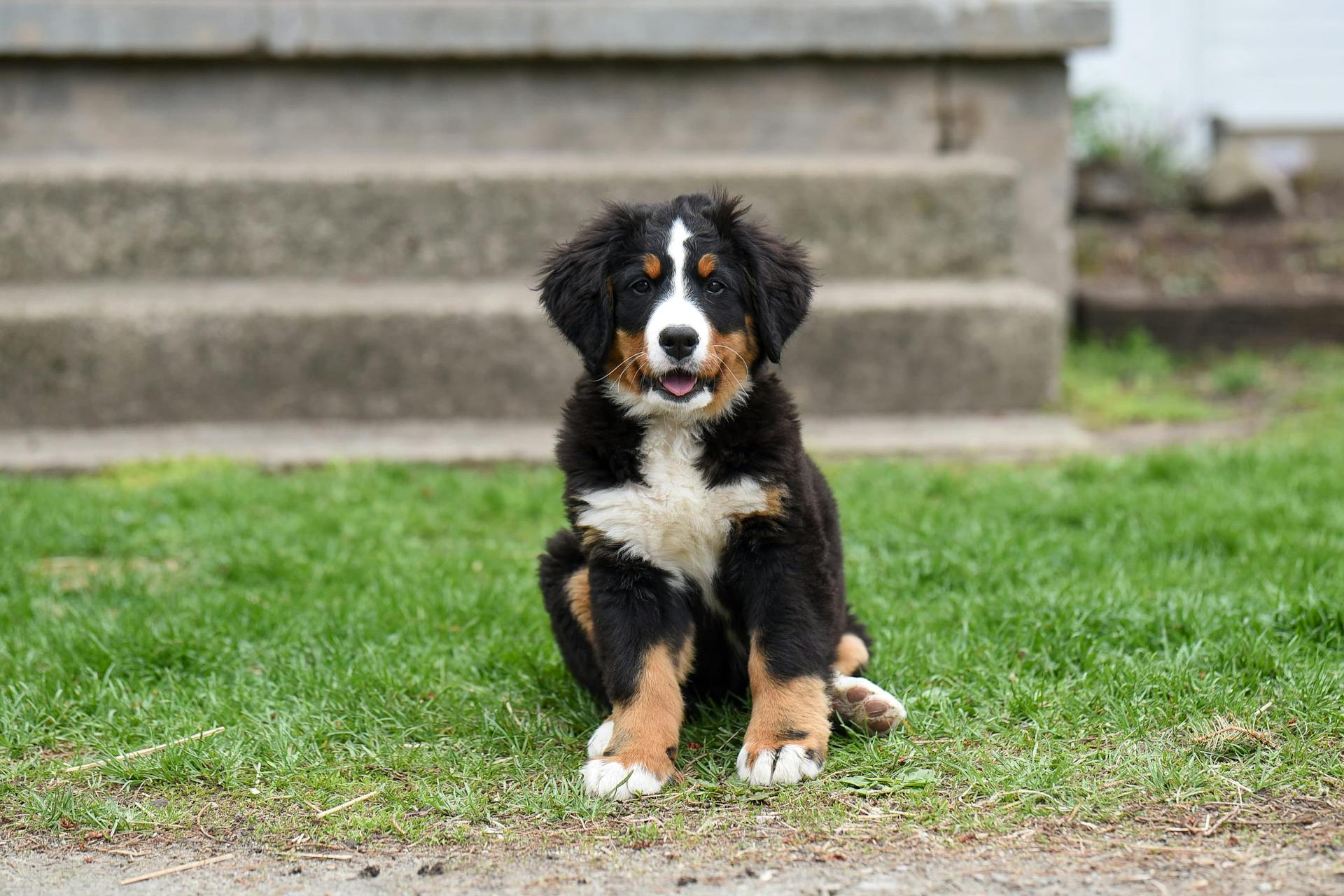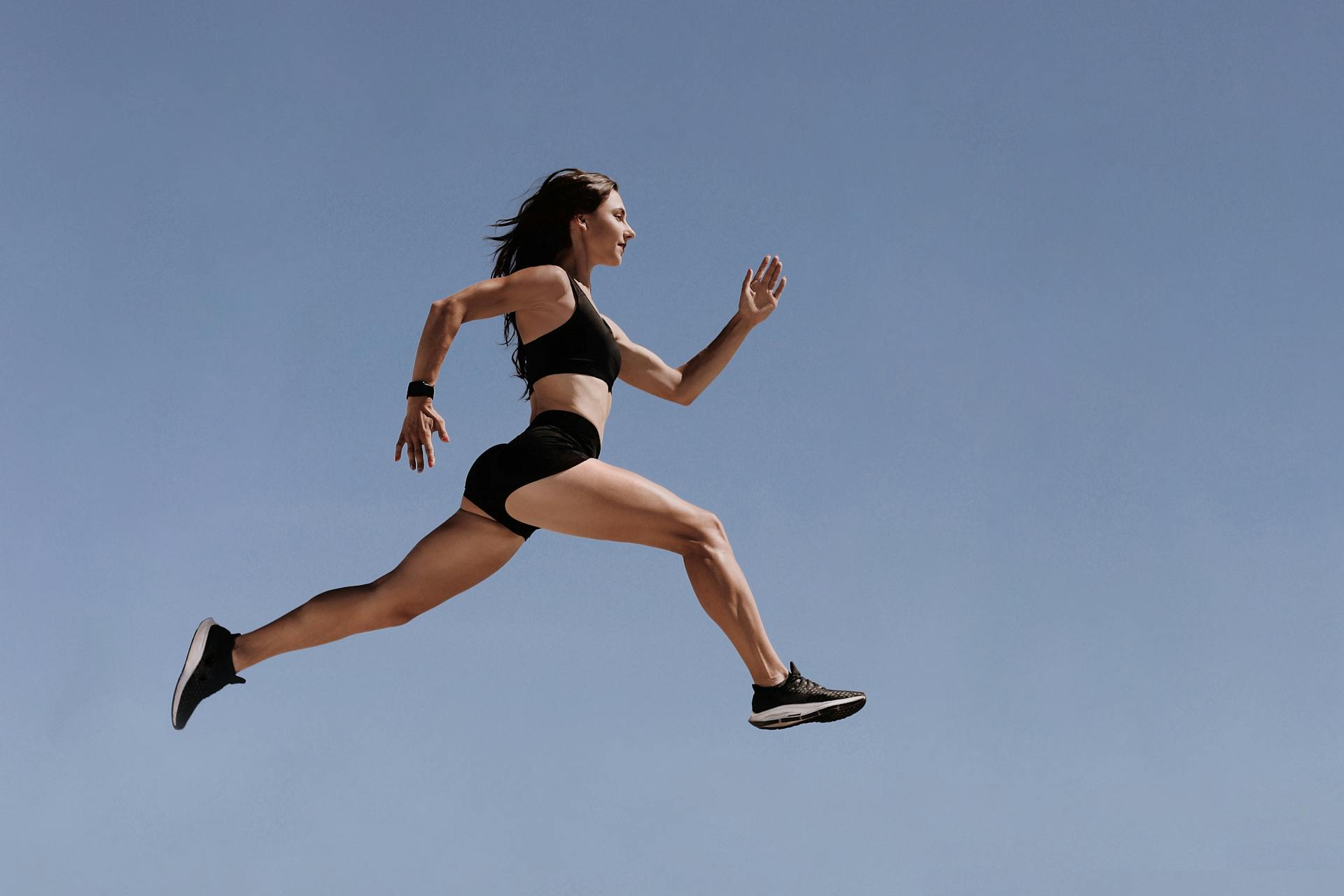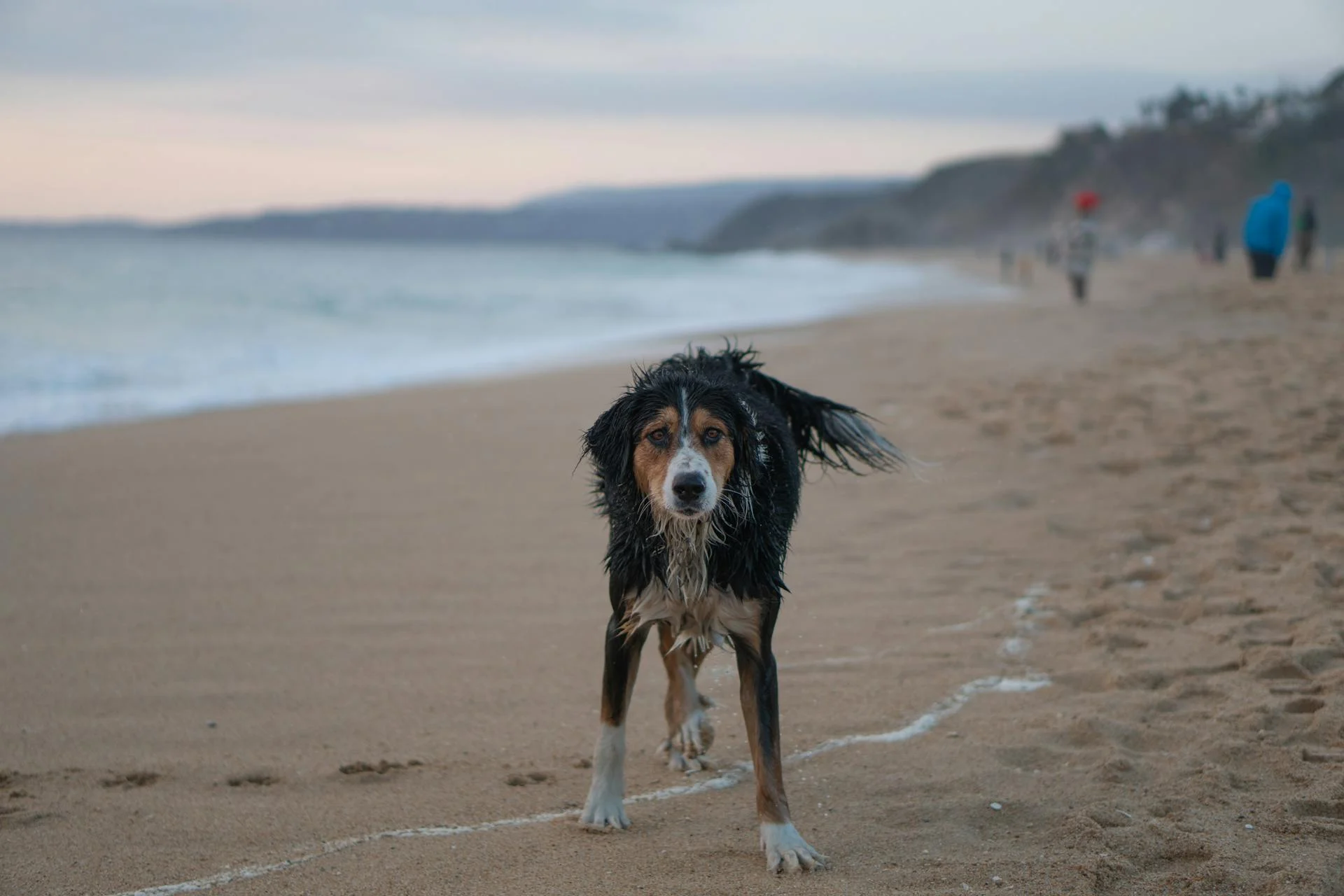
Bernese Mountain Dogs are a beloved breed known for their gentle and affectionate nature. They originated in Switzerland as working dogs, specifically designed to assist with herding and drafting.
Their thick coats are a testament to their mountainous heritage, requiring regular grooming to prevent matting and tangling. In fact, the Bernese Mountain Dog's coat is one of its most distinctive features, with a black base color and rust-colored markings.
These dogs are often described as calm and laid-back, making them an excellent choice for families with children. However, they do require regular exercise to maintain their physical health and mental well-being.
Potential Bernese Buyers
If you're considering bringing a Bernese Mountain Dog into your family, there are several things to keep in mind.
First and foremost, choose the right breed for your lifestyle. With their gentle giant reputation and calm demeanor, Bernese Mountain Dogs make excellent companions for active families or individuals who want a low-maintenance pet.
When deciding whether to get a dog, it's essential to think about why you want one in the first place. Will it be for exercise, companionship, or simply to add some joy to your life? Whatever your reason, a Bernese Mountain Dog can bring so much happiness into your home.

Finding a responsible breeder is crucial when bringing a new puppy into your family. Look for breeders who prioritize health testing and temperament evaluation in their breeding program.
Getting started in dog sports like agility or obedience training can be a great way to bond with your Bernese Mountain Dog and provide them with mental and physical stimulation.
All About Puppies
---------------
If you're bringing a new puppy into your home, here are some things to keep in mind:
- Puppy-proof your home by removing hazardous items and securing toxic substances.
- Establish a routine for feeding, exercise, and playtime to help your puppy feel secure and develop good habits.
- Schedule regular veterinary check-ups to ensure your puppy receives necessary vaccinations and health checks.
Whether you're a seasoned dog owner or a first-time buyer, bringing a Bernese Mountain Dog into your family can be a rewarding experience for everyone involved.
History
The Bernese Mountain Dog has a rich history that spans centuries. In some locales, they were known as Dürrbachhund or Dürrbächler, named after a small town where these large dogs were particularly common.
By the early 1900s, fanciers began showcasing the breed at shows in Berne, and in 1907, a group of breeders from the Burgdorf region founded the first breed club, the Schweizerische Dürrbach-Klub. They also wrote the first Standard that defined the dogs as a separate breed.
Intriguing read: Mountain Feist Mix
In just three years, there were already 107 registered members of the breed. This rapid growth is a testament to the breed's popularity and appeal.
The American Kennel Club recognized the Bernese Mountain Dog in 1937, classifying it as a member of the Working Group. Today, the breed continues to grow in popularity in the US, ranking 22nd place by the American Kennel Club in 2017.
Related reading: Bernese Mountain Dog Standard
Physical Characteristics
The Bernese Mountain Dog is a majestic breed with a sturdy build and impressive size. They typically weigh between 80-120 pounds and stand between 23-27.5 inches tall at the shoulder.
Their thick coat is one of their most distinctive features, requiring regular grooming to prevent matting and tangling. In fact, they shed heavily twice a year, so be prepared for some extra vacuuming during these times!
With their broad chests and well-sprung ribs, Bernese Mountain Dogs are built for endurance and agility. They have a short, docked tail that adds to their overall athletic appearance.
Here's a breakdown of the average physical characteristics of a Bernese Mountain Dog:
Their intelligent eyes are a deep brown, often with a hint of gold or yellow. They have a black nose and well-developed ears that help them navigate their surroundings.
Overall, the Bernese Mountain Dog's physical characteristics make them a stunning breed to behold – and a loyal companion for those who appreciate their unique charm!
Common Health Problems

When it comes to Bernese Mountain Dogs, their health is a top concern for many owners. They tend to be a healthy dog breed, but they can be predisposed to some health issues.
One of the most significant health concerns for Bernese Mountain Dogs is their lifespan, which averages 7–10 years. This means that owners should be prepared for a shorter time with their furry friends compared to smaller breeds.
While it's true that Bernese Mountain Dogs are generally healthy, they can still develop certain health issues. One of the most common problems is related to their large size and short lifespan – pet insurance may be a good investment for families looking to bring home a Bernese Mountain Dog puppy.
See what others are reading: Mini Bernese Mountain Dog Lifespan
Gastric Dilatation-Volvulus (GDV)
Gastric Dilatation-Volvulus (GDV) is a serious and potentially life-threatening condition that requires immediate attention. It occurs when the stomach fills up with food or gas, causing it to expand and put pressure on surrounding organs.
In dogs, this can happen suddenly and without warning, making it crucial to recognize the signs of GDV early on. If left untreated, shock, tissue damage, and even death can occur.
Dogs that are older, have a deep chest, or are fed from elevated bowls are at increased risk of developing GDV. This includes breeds like the Bernese Mountain Dog.
Feeding dogs only once per day can also increase their risk of GDV. To prevent this condition, some veterinarians recommend performing a surgery called prophylactic gastropexy, which secures the stomach to prevent it from twisting.
Hip Dysplasia

Hip dysplasia is a common health problem that can affect dogs, particularly large breeds. It's caused by a loose joint in the hip area, which can be influenced by growth rate, hormones, diet, and exercise.
Maintaining a lean body is crucial for preventing arthritis, which can develop as a result of hip dysplasia. Many vets recommend low-intensity exercise to help manage this condition. In fact, some studies have shown that regular exercise can improve joint mobility and reduce pain in dogs with hip dysplasia.
A healthy diet rich in omega-3 fatty acids, such as fish oil, can also help alleviate symptoms of hip dysplasia. These essential fatty acids have anti-inflammatory properties that can reduce joint inflammation and promote healing. Some vets recommend adding joint supplements containing glucosamine and chondroitin to a dog's diet to support joint health.
While surgery may be necessary in severe cases of hip dysplasia, there are many ways to manage this condition without resorting to surgery. By working with your vet to develop a treatment plan that includes a combination of exercise, diet, and supplements, you can help your dog live a happy and healthy life despite hip dysplasia.
If this caught your attention, see: Bernese Mountain Dog Health
Elbow Dysplasia
Elbow dysplasia is a condition where the elbow joint develops abnormally due to genetics, rapid growth, diet, and trauma.

This can cause pain, limping, and lameness, which can progress into arthritis if left untreated.
In most cases, surgery is required to treat elbow dysplasia, but the severity of the condition determines the course of treatment.
If you suspect your dog has elbow dysplasia, it's essential to consult with a veterinarian as soon as possible to determine the best course of action.
You might enjoy: Hip Dysplasia Bernese Mountain Dog
Frequently Asked Questions
Is a Bernese Mountain Dog a good house dog?
Yes, a Bernese Mountain Dog makes an excellent house dog for owners who have space and enjoy gentle companionship. They thrive in calm environments with regular grooming and affection.
Why is Bernese Mountain Dog so expensive?
The cost of a Bernese Mountain Dog from a reputable breeder typically ranges from $700 to $2,000 due to factors like lineage, care quality, and breeder reputation. This investment often comes with a lifetime of loyalty and companionship from your new furry friend.
Are Bernese mountain dogs high maintenance?
Yes, Bernese mountain dogs are considered high maintenance due to their heavy shedding and large size, requiring regular grooming and careful handling.
What are the pros and cons of a Bernese Mountain Dog?
"Pros: Bernese Mountain Dogs are known for their calm and gentle nature, making them great family pets. Cons: They may be prone to health issues like allergies, eye problems, and heart disease."
Are Bernese mountain dogs big barkers?
No, Bernese Mountain Dogs are generally quiet dogs that only bark when necessary. However, they do require regular exercise to stay happy and healthy.
Featured Images: pexels.com

